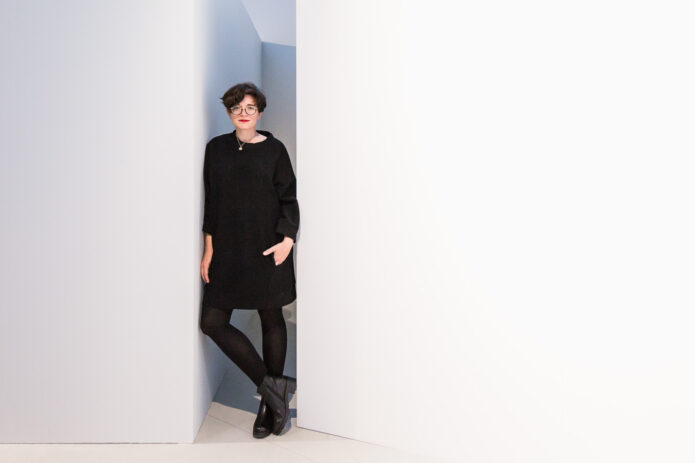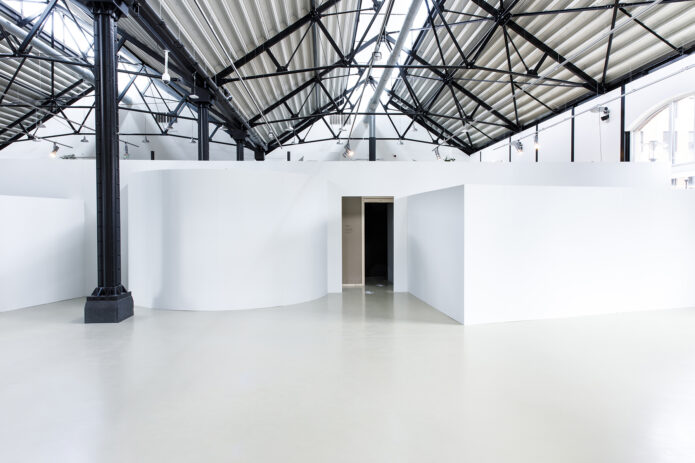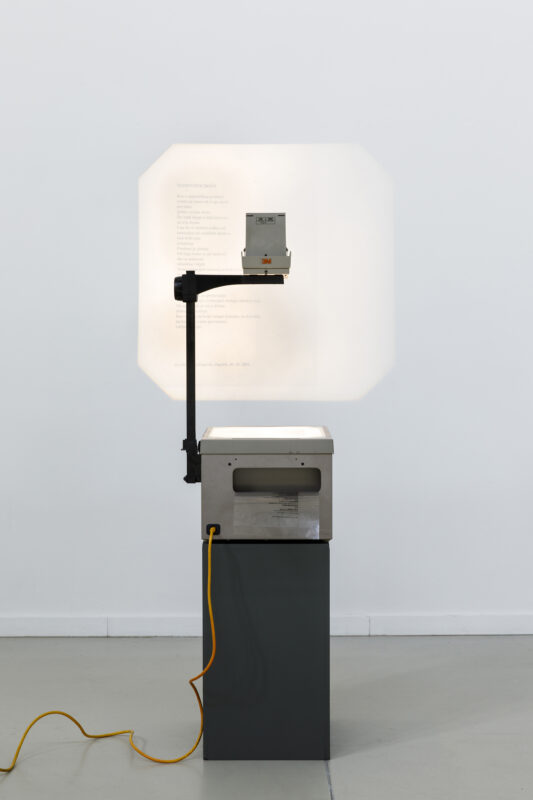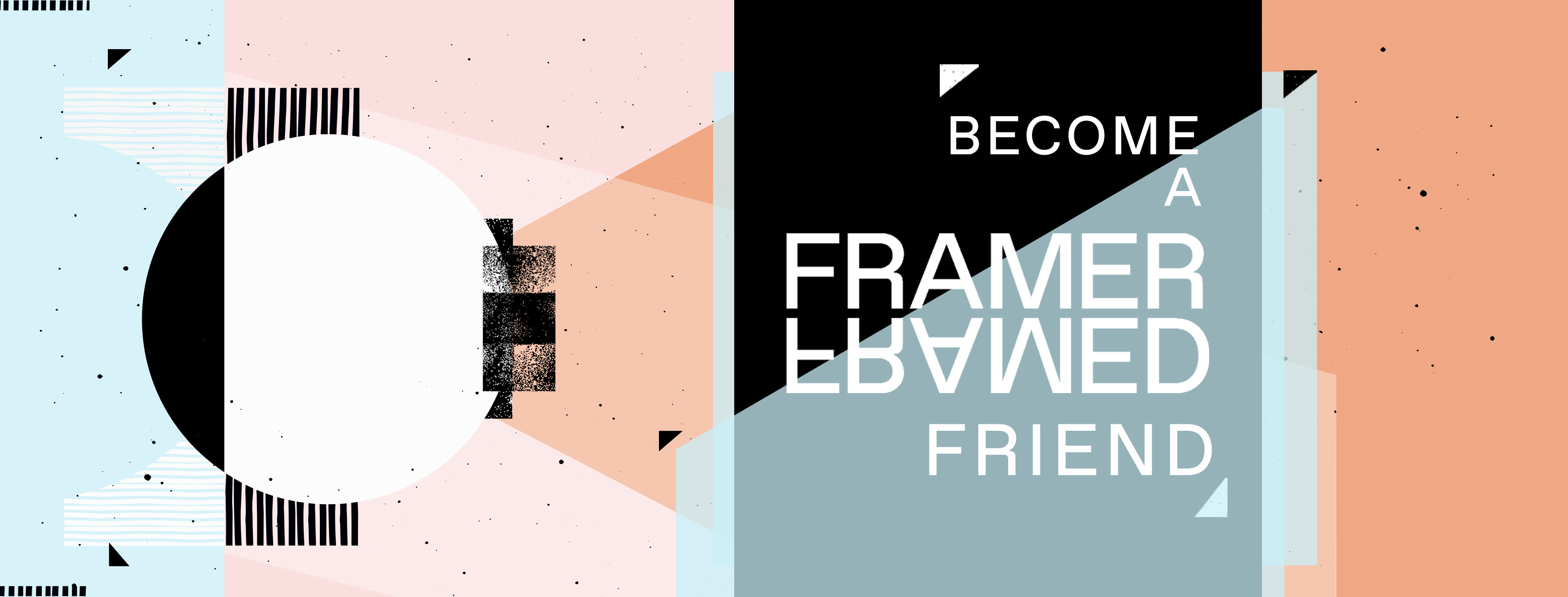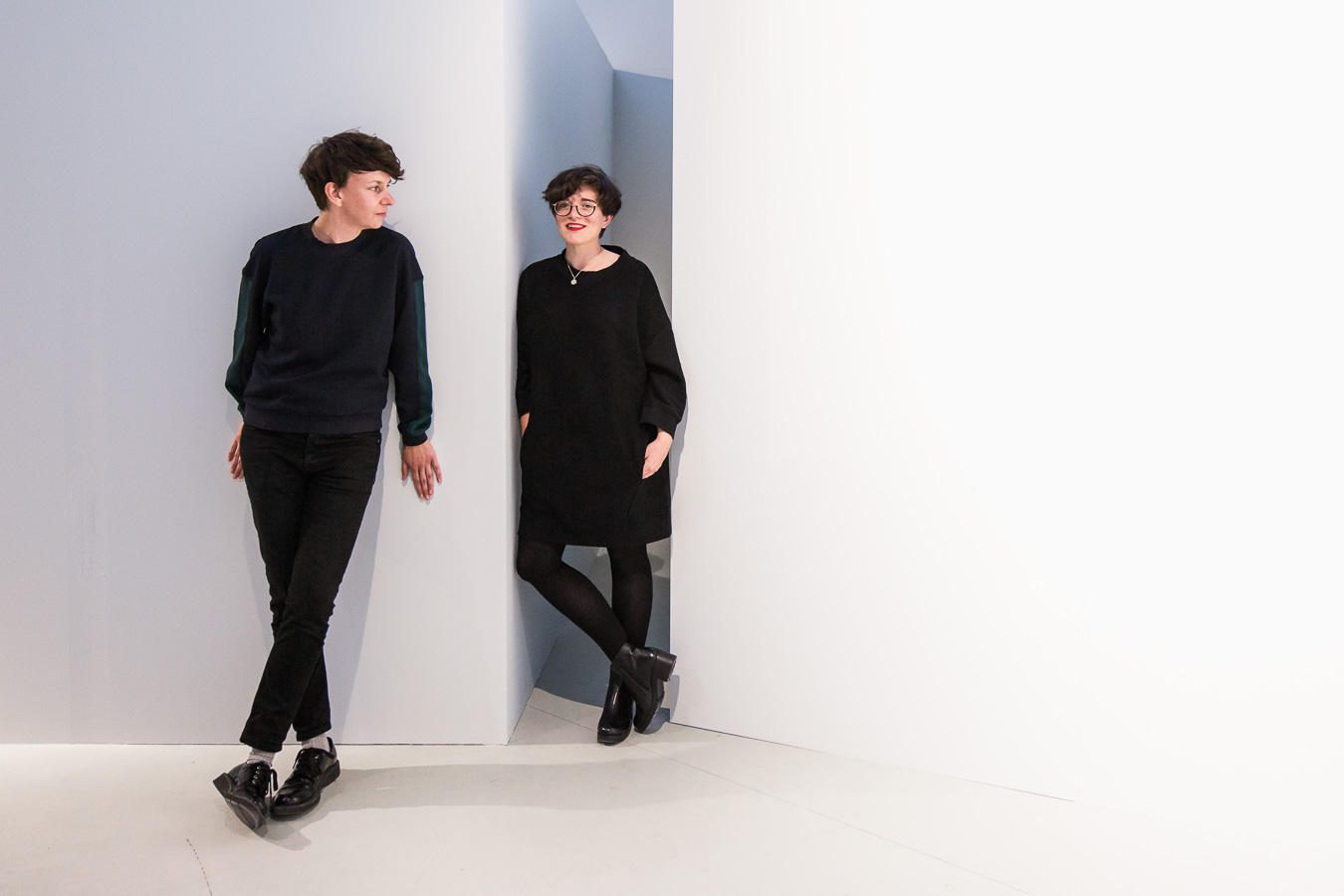 Anna Dasović & Natasha Marie Llorens. Foto: © Maarten Nauw / Framer Framed
Anna Dasović & Natasha Marie Llorens. Foto: © Maarten Nauw / Framer Framed Curatorial Statement: From what will we reassemble ourselves
The exhibition From what will we reassemble ourselves was conceived by Anna Dasović in response to an invitation by Framer Framed to present a body of work she has been developing for years centered on the representation of the genocide which occurred in and around Srebrenica. It did not stay a solo exhibition. Instead, it evolved into a multilateral collaboration between the participants involved and she and I. This evolution is meant to address how difficult it is to represent the genocide, and it constitutes a refusal to do so from a singular perspective. From what will we reassemble ourselves renders a spectrum of positions which displace a male militarised perspective on which the public discourse in the Netherlands has primarily centered.
A conversation between Natasha Marie Llorens and Anna Dasović
I come to the exhibition in the same position, perhaps, as many of its visitors, which is to say that I knew very little about the violent wars in Bosnia and Herzegovina in the 1990s in the wake of the dissolution of the Socialist Federal Republic of Yugoslavia (SFRY). I was also unaware of the Dutch Netherlands Army’s deployment of blue helmets in the UN peace-keeping mission to Srebrenica and of the enduring impact of the murderous events that took place there in July 1995 on the collective psyche in the Netherlands. What drew me into the project was the rigorousness with which Dasović interrogates the representation of violence and our shared understanding of the problems that arise from such representations, problems which are also at the heart of the political role of aesthetic practice more broadly.
To do justice to the range of problems attendant to the representation of violence would require many hundreds of pages, and in fact Ana Hoffner’s book The Queerness of Memory (2018) and Erna Rijsdijk’s Lost in Srebrenica (2011)—both authors who are also part of the exhibition—do this work in depth with regard to the wars in Bosnia and Herzegovina. Nevertheless, in broad strokes the problem with the representation of violence is that violence traumatises and thus, as Cathy Caruth argues so lucidly, “trauma is not locatable in the simply violent or original event in an individual’s past, but rather in the way that its very unassimilated nature—the way it was precisely not known in the first instance—returns to haunt the survivor later on.” [1] If even the survivor cannot know, in an ultimate sense, the event of violence that traumatised them, how could anyone else claim to understand it well enough to picture it faithfully, or with finality? The implications of this impasse are vast because the (im)possibility of showing genocide irrefutably makes the categories that depend on visual proof for their legitimacy unstable.
Violence destabilises representation, in other words, and yet the genocidal events in Srebrenica, Zvornik, Žepa, Prijedor, Trnopolje, Omarska, Sarajevo and so many other places during the conflicts must be rendered somehow. Their dead must be mourned and the dehumanisation that made their deaths possible must be denounced for their sake, but also for the sake of the Europeans and the Americans who were complicit in these processes. Settled into the instability of representation, From what will we reassemble ourselves (2020) contributes to this imperative.
What follows is a conversation between myself and Anna Dasović about her research, the socio-political context for the exhibition, and the connections we both see to the works presented.

Anna Dasović – Before the fall, there was no fall. Episode 01: Raw material (2019). Photo: © Eva Broekema / Framer Framed
Natasha Marie (NM): Can you talk a bit about why it was important to you to open this exhibition up to other practioners?
Anna (A): If I have learned anything from working on and thinking with Srebrenica, it is that there is no consensus on its representation. It is necessary, at a moment that marks its 25-year commemoration, to move away from the understanding of Srebrenica as a singular event that transpired over ‘just’ a month in July 1995. My work around Srebrenica needed to be read as one part of a polyphony of positions which address the representation of violence in a broader scope. I also felt it was crucial to go beyond the white male militarised doctrine which my own work is centred on and to include positions that are not marked by Dutch whiteness.
NM: Your mother was born in the Netherlands and your father was born in the former Yugoslavia. You carry his name and thus perhaps also some of the racialised stigma attached to people in the Netherlands with that background. I wonder how this informs your understanding of whiteness, and why, when you speak about this project, you insist on your own Dutch-ness.
A: Ever since I started the work on Srebrenica, my ’roots’ have been at the heart of assumptions curators, art critics, and journalists make about who I am as an artist and as a speaking subject. It confuses people, especially here in the Netherlands, when they realise that within my artistic practice I explicitly choose not to identify as someone from the territories of the Former Yugoslavia. It is as if they lose their hold on me, their sense of what I am allowed to say.
NM: So, because of your last name people imagine you can only embody one ethnicity—one that belongs elsewhere?
A: Yes. My refusal to let my work be read in relation to my ethnicity brushes against the grain of a fantasy that people in the Former West wish to sustain about the origin of these wars, which comes down to an essentialised understanding of ethnicity. [2]
If we look at the persistence with which a few ethno-nationalist politicians in the SFRY managed to employ a fictionalised sense of ethnic entitlement as a justification to “ethnically cleanse” whole geographical territories, this is not a strange fantasy, but it is nevertheless inaccurate. The terms “ethnic cleansing” have now become widespread even in Western media but they actually originate in Serbian propaganda from the 1980s. This detail is important, as to center ethnicity in the discourse around Srebrenica is to speak with language invented by the perpetrator and to unconsciously reproduce their propaganda.
Normalising the term “ethnic cleansing” took years and it had one goal: building public consensus on ethnicity as the ‘true’ justification for the dissolution of Yugoslavia and the resulting wars. This claim about ethnic entitlement allowed politicians to privatise SFRY’s assets and claim its territory. The process was accelerated by the United States, which doomed the Federation to bankruptcy by cutting off credit to Yugoslavia, which in part caused its dissolution. Then the US funded those politicians who actively campaigned for such a dissolution on ethnic grounds, further legitimising them.[3]
The Former West has been deeply complicit in sustaining this fiction, casting people as participants of an ‘(un)civil war’ and assigning them reductively to an ‘ethnic’ identity. It allows people in the Netherlands to designate the violence which culminated in genocide in Srebrenica as originating there instead of here.
I insist on speaking from a Dutch perspective because it makes me complicit in the production of this divide—which is a neo-colonial divide—between Europe and its exterior, between the ‘civilised West’ and its ‘barbaric ethnic Others’.

Lana Čmajčanin – Balkangreuel – Balkan Cruelty (2019). Photo: © Eva Broekema / Framer Framed
NM: I wonder about how the ‘othering’ of people and the representation of genocide relate to feminism here. The exhibition is dominated by the perspectives of artists who identify as women. To what degree was this a decision on your part?
A: Dubravka Žarkov has insisted that the bodies of men and women were the very sites upon which the wars in a dissolved Yugoslavia were fought. It is this lived and symbolic embodiment that enabled ethnicity to be upheld. What, then, are the implications of a military gaze which acknowledges the presence of the female body only in relation to a territory and therefore via objectification? My insistence on working with female, feminist and queer voices and bodies of work is about breaking with the supposed ‘natural’ authority of men in a militarised context.
A: But I would ask you the same question. As we were looking together at the initial very long list of positions and artists under consideration for this exhibition we have talked a lot about how urgent it is to give space to complex representations of the female body, especially by foregrounding feminist and decolonial perspectives on that body. Can you tell me how you see those positions now reflected in this exhibition?

Arna Mackic – From what will we reassemble ourselves (2020). Photo: © Eva Broekema / Framer Framed
NM: Yes, we talked a lot about that aspect because it is less important that the exhibition includes more female-identified artists than that it critically deconstructs masculinism. For example: Dautbegović’s poem is about bones, or that which ultimately remains of the body. The link to the body as the place from which remembering takes place and also the place from which the future of love is imagined felt important to me. This focus on the body bridges Arna Maćkič’s quasi-monumental structure that houses each visitor’s body, Ana Hoffner’s work on embodied memory and Selma Selman’s work on the pluralism of experience within the body in a way that Marko Peljhan’s more analytical presentation does not. The contrast between these positions is important, but so is the skew towards a presentation of what the body knows. I see this curatorial bias as feminist.
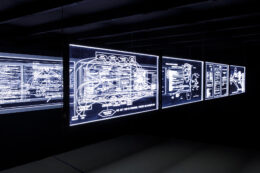
Marko Peljhan – Territory 1995 (2009-2010). Photo: © Eva Broekema / Framer Framed
Also, I agree with you about the way colonialism and orientalism position women in relation to territory, but I would add two other problematic stereotypical representations of them: first, that women are emancipated through their overly- sexualised visibility and, second, as the mute victims of their male counter-parts’ irrational violence. We don’t entirely avoid either of these stereotypes, actually: the newsreel that Hito Steyerl tries to re-create is a propaganda/educational film about Bosnian women learning to read and Bosnian Muslim women unveiling themselves triumphantly; the women in Lana Čmajčanin’s work are both the graphic victims
of sexual violence and closely identified with native plants. Lana Čmajčanin is explicitly deconstructing this kind of representation, but Steyerl’s work is more ambivalent about its rejection of orientalising narratives concerning the veiled, illiterate woman.
These contradictions are essential to a feminist approach to exhibition-making, which challenges the structural privilege of one position by insisting on pluralism in representation.

Selma Selman – Superpositional Intersectionalism (2020). Photo: © Eva Broekema / Framer Framed
A: Dubravka Žarkov is again very helpful here: ‘The Srebrenica trauma’ in the Netherlands is “a discourse in which masculinity, military and nation are linked in a very specific way.” [4] The consequences of this discourse are enormous, as the fall of Srebrenica is deemed significant only when transformed into an element of Dutch national sentiment about its men.
NM: What you are saying is that the focus in the Netherlands is on a gendered form of trauma, white masculine trauma suffered in the context of a nationalist organisation, as opposed to a more responsible focus on the gendered trauma suffered by women.
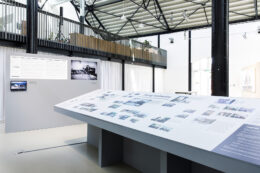
Facing Srebrenica Project – Facing Srebrenica and the Future of Memory in Europe (2020). Photo: © Eva Broekema / Framer Framed
A: Yes. Centring the exhibition on female-identified positions means insisting on having a different conversation. It also insists on attending to the life that continued to be lived in Srebrenica.
‘The Facing Srebrenica’ project is important in this respect, even if I think showing pictures from the personal archives of Dutch soldiers is difficult and full of contradictions. Including their research is a way to open up a space for the human agency of individual Dutch soldiers deployed there without falling into the trap of either asking those individuals to be accountable for military decisions that were made on a much higher level or asking them to re-perform their trauma.
But also, and more importantly, Azir Osmanović’s request to Erna Rijsdijk for pictures, for ‘an image’ of his brother, is a manifestation of the desire of those who lived on afterwards to find a human picture of the murdered. This desire attenuates the question in Dautbegović’s poem: From what will we reassemble ourselves, if again we decide to love one another?

Still: Anna Dasović – Before the fall there was no fall. Episode 02: Surfaces (2020). Video still
NM: It was also important to me to include work that was not directly related to the genocide in Srebrenica. The idea was to widen representation to include the images of violence that conditioned its possibility. What are the problems with the existing or mainstream forms of representation from your perspective?
A: When we speak about the genocide in Srebrenica in the Netherlands, and in general, the default is to talk about the span of a few days during which the enclave fell, the deportation of men and women from the compound, and the executions. While it remains crucial to continue to discuss that period for many political reasons, it also limits a viewer’s understanding of genocide. Genocide is rather a process with definitive stages. [5]
At which moment in time did the classification of peoples begin? Who made them into ‘ethnic’ subjects? To what extent did the racialised perceptions of outside actors sustain the dehumanisation of people in Srebrenica? This project does not give definitive answers, but it does want to position those few days in July within these questions and in the context of European politics of the 1990s as a continuation of imperialism, conquest and colonial tendencies. Especially because the establishment of international courts in the 90s under the guise of a human rights discourse obscured European colonial history by allowing it to present itself as an ethical peacekeeping continent.
For the people in Srebrenica, the intention to annihilate them started years before the genocide when their neighbours started to call them ‘‘Turks” and started raping and executing them. This did not unfold over a week in July, but systematically over several years. Walid Sadek compellingly describes the survivor as “a witness who knows too much carrying an unwelcome but necessary knowledge.” [6]
When the enclave finally fell, the people in Srebrenica were already witnesses in Sadek’s sense. How does this correspond to Caruth’s assertion of the traumatic event as unknowable?
NM: The unwelcome knowledge of the survivor is essential, of course I agree. But what is so valuable in Caruth’s work, among that of others, is her articulation of the representation of genocide as a political problem. How does the survivor communicate knowledge? In what arena or framing discourse? What limitations does representation impose on their testimony? This is also where Hito Steyerl’s work is crucial to the exhibition: she is trying to reconstitute a film using the testimony of those who witnessed and survived its destruction, and I think this attempt fails beautifully to locate and render the “truth” of this particular event during the siege of Sarajevo.

Marko Peljhan – Territory 1995 (2009-2010). Photo: © Eva Broekema / Framer Framed
Another way to think about this problem is through Marko Peljhan’s work, which pictures radio communications from many different perspectives during the fall of the UN “Safe Area”. They are recordings of people who participated, but if they are perpetrators do they also carry the unwelcome knowledge of the survivor? No, not exactly. But they know things that survivors did not yet know and the representation of the genocide as seen from the traces they left is crucial to establishing the “truth” of the events, no?
NM: This brings me to a final question: We spoke at length in preparation for this project about the figure of the bystander, the one who was not involved but who saw in many different senses of that word. Can you talk about why this figure is important to you?
A: I don’t think the figure of the bystander is either singular or stable, rather it brings a whole range of additional questions to bear on the representation of genocide. Which people count as bystanders and which hide behind the guise of that figure and its inherent impossibility? What is the bystander able to witness through representation and to whom are they accountable by virtue of representation? What does the bystander know, fail to know, and fail to admit to already knowing?
Judith Butler asks, “how do we understand the frame as part of the materiality of war and the efficiency of its violence?” [7] I would extend this question to ask: How did the people in Srebrenica arrive to us through the image, and how is that frame complicit in their final disappearance? This is also to ask which body, which structure, which society allows the disappearance of a people. [8]
References
[1] Cathy Caruth, Unclaimed Experience: Trauma, Narrative and History (Johns Hopkins University Press, 2007), 4. [2] Maria Hlavajova and Simon Sheikh, eds., Former West: Art and the Contemporary After 1989 (Cambridge, MA: MIT Press, 2016). [3] Franco Berardi Bifo, “The Coming Global Civil War: Is there any way out?”, in E-flux Journal #69, January 2016. [4] Dubravka Žarkov, Srebrenica Trauma: masculinity, military and national self-image in Dutch daily newspapers, in The Postwar moment. Militaries, masculinities and international peacekeeping (London, Lawrence and Wishart, 2002), 190. [5] Gregory Stanton identifies ten distinct stages of genocide, the first six being: Classification, Symbolization, Discrimination, Dehumanization, Organization,and Polarization. Gregory H. Stanton, The Ten Stages of Genocide, 1996 retrieved on 12 May 2020. [6] Walid Sadek, The Ruin to Come, Essays from a protracted war (Berlin: Motto Books 2015): “When framed as a posthumous figure, or that which lives on in spite of its death, the survivor is an impediment to the reconstruction of society along normative guidelines. But the persistent conditions of protracted civil-war in Lebanon call for a re-conceptualization of the figure of the survivor along another temporal axis. No longer posthumous, the survivor is not an over-liver but rather a witness who knows too much carrying an unwelcome but necessary knowledge.” [7] Judith Butler, Frames of war. When Is Life Grievable? (Versobooks: London: 2016) IX2. [8] Georges Didi-Huberman argues that whenever we think that the people are pictured to become visible to us, they are actually exhibited and disappear. “The people are exhibited in that they are menaced by their own representation (be it political or aesthetic), which is seen too often in their own existence. The people are always exhibited to disappear. What to do, what to think, in this state of perpetual threat? How to make the people see themselves in the eyes of each other rather than in their own disappearance? How to make the people visible and take form?” Georges Didi-Huberman “Fragments of Humanity”, in The Human Snapshot (Berlin: Sternberg, LUMA Foundation, CCS Bard, 2013) p. 269.Conflict / Political Climate /
Exhibitions

Exhibition: From what will we reassemble ourselves
A group exhibition conceived by Anna Dasović and curated by Natasha Marie Llorens
Network
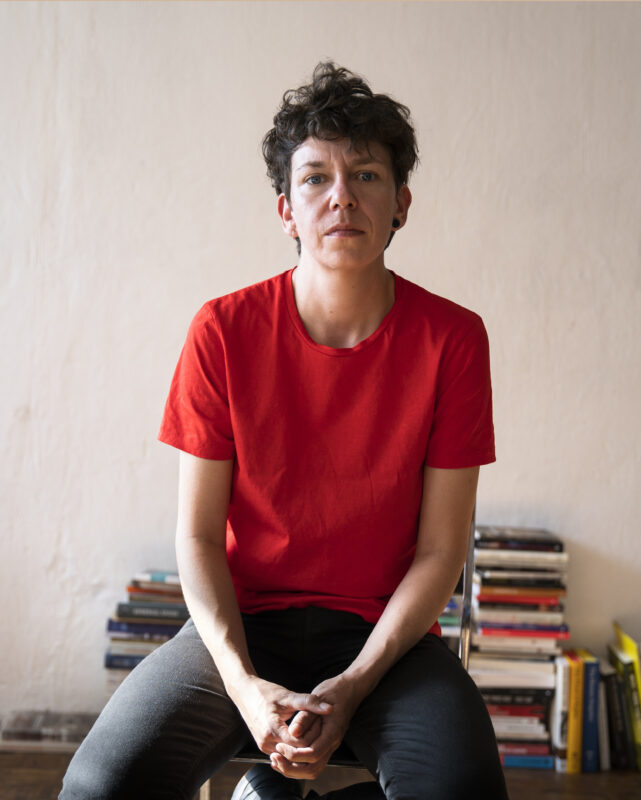
Anna Dasović
Artist
